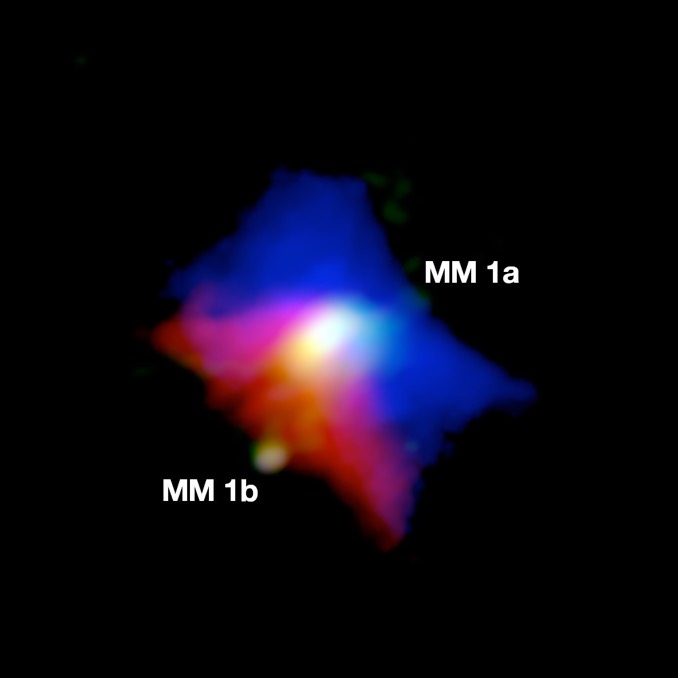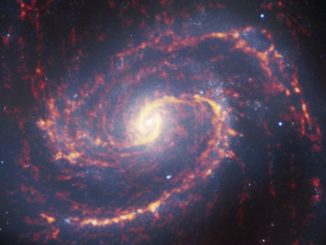
The Atacama Large Millimeter/submillimeter Array has spotted two stars forming in the same protoplanetary disc 11,000 light years from Earth. But they are far from identical twins.
On star is huge by even stellar standards, 40 times more massive than the Sun. The other is just one-eightieth that size, indicating a very different history. The larger star, known as MM 1a, formed by traditional means when a dense cloud of gas collapsed under its own gravity, triggering fusion reactions in the high-density, high-temperature core.
But at some point, a portion of the swirling disc apparently broke away, or fragmented, forming the core of the diminutive companion.
“Astronomers have known for a long time that most massive stars orbit one or more other stars as partners in a compact system, but how they got there has been a topic of conjecture,” said Crystal Brogan, an astronomer with the National Radio Astronomy Observatory in Charlottesville, Virginia. “With ALMA, we now have evidence that the disc of gas and dust that encompasses and feeds a growing massive star also produces fragments at early stages that can form a secondary star.”

MM 1a is a previously known star surrounded by a disc of gas and dust. ALMA recently detected the smaller companion, MM 1b, just outside the protoplanetary disc. It is one of the first examples of such a fragmented disc to be found.
“In low-mass stars like our Sun, it is in these discs that planets can form,” said John Ilee, an astronomer at Leeds University and lead author of a study in the Astrophysical Journal Letters. “In this case, the star and disc we have observed are so massive that, rather than witnessing a planet forming in the disc, we are seeing another star being born.”
Does MM 1b feature its own protoplanetary disc? If so, planets may not have very long to form.
“Stars as massive as MM 1a only live for around a million years before exploding as powerful supernovae,” said Ilee. “So while MM 1b may have the potential to form its own planetary system in the future, it won’t be around for long.”



